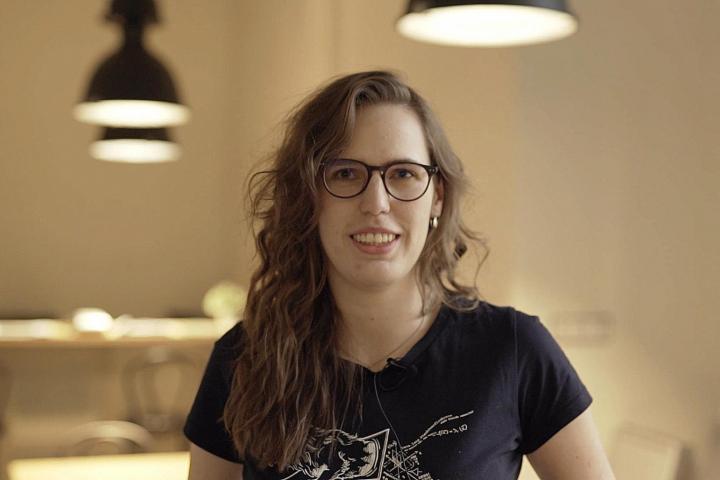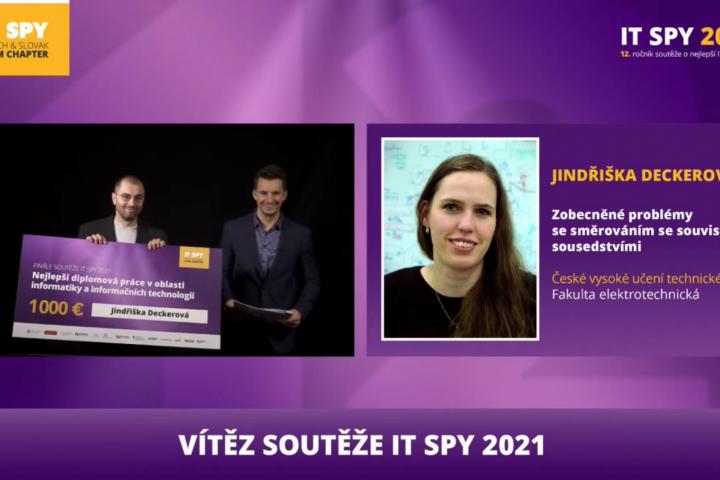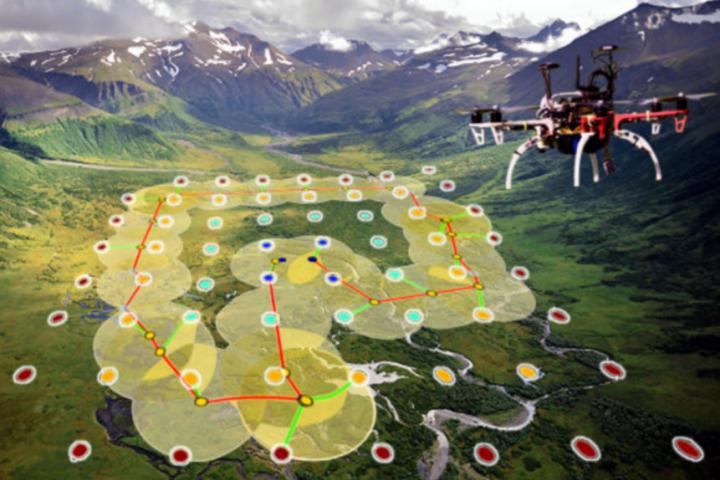
The winner of the competition (Faculty of Electrical Engineering, Czech Technical University in Prague) in her work entitled "Generalized routing problems with contiguous neighborhoods" focused on a unique algorithm for finding an optimal path, which she demonstrated on autonomous drones and robots while scanning building interiors and taking photos of objects. Jindřiška Deckerová is a graduate of the Open Computer Science program and is now continuing her research as a PhD student at the Centre for Artificial Intelligence at the same faculty.
"The final very balanced evaluation of the jury only confirms the high level of the final works. The difference in the scoring of competing theses was really negligible, so until the last moment it was not clear who would receive the imaginary medals. What impressed me about the winning entry was that it combines high theoretical content with practical application in robotics. It is a complex theoretical optimization problem, but the project also stands out for its well-developed practical part. The work impressed the whole jury with the depth of the solution, the precision of the compilation and the applicability to different problems. It combines the software world and artificial intelligence with the real world through robots," said the jury chairman Jiří Vokřínek from the Faculty of Electrical Engineering of Czech Technical University in Prague.
The second place and the Public Award went to Patrik Goldschmidt (Faculty of Information Technology, Brno University of Technology) with his thesis "Mitigating DoS attacks using machine learning". The author focused on faster detection of frequent and very dangerous cyber attacks. An application that uses machine learning methods can help in protecting the Internet infrastructure. The work impressed the judges because of its comprehensive use of a number of theoretical principles that are already being applied in practice.
The bronze medal was awarded to Matúš Goliaš (Charles University, Faculty of Mathematics and Physics) for his work "Gradient-enhanced segmentation of retinal fundus images". It is a method of evaluating the so-called blind spot of the optic nerve of the eye with the aim of making more accurate diagnoses of eye diseases. The method aims to facilitate early detection of eye diseases, especially glaucoma, which is the most common cause of blindness worldwide. The author plans to develop the project further in collaboration with doctors.
"This year we had to conduct the IT SPY finals in an online environment again. However, this did not prevent us from fulfilling one of the basic goals of the competition, which is to present the best Czech and Slovak IT theses to the wider public. I believe that this year's streaming of the finals on the news portals iDNES.cz, Tyden.cz and Ceskenoviny.cz helped us a lot. Popularization of science and increased interest in IT can also be bolstered by the fact that the winner of the IT SPY was a woman for the first time, which helps dispel the myth that computer science is the domain of men. Computer science is an extremely fast-growing field and keeping up requires knowledge, but also drive and a desire to learn new things. And one place where such people are concentrated in large numbers is in universities. And that's exactly why we at Profinit have such a broad collaboration with them, not only in this competition but also in teaching, thesis and research grants. We believe that linking cutting-edge science and its application to the solution of specific social and business problems is the right way to go," says Bohumír Zoubek, IT SPY juror for Profinit, which co-organizes the competition.
The prize for the winner was a financial award of 1,000 euros from Profinit. In addition, the authors of the three best theses received professional courses worth a total of 30,000 CZK from the GOPAS computer school and a subscription to IT Systems magazine from the media partner.
A complete overview of the final results of the 12th IT SPY competition:
|
Final ranking |
Name of the finalist |
Title of the diploma thesis |
Name of the applying university |
|
1. |
Jindřiška Deckerová |
Generalized routing problems with contiguous neighborhoods |
Czech Technical University in Prague Faculty of Electrical Engineering |
|
2. |
Patrik Goldschmidt |
Mitigating DoS attacks using machine learning |
Brno University of Technology Faculty of Information Technology |
|
3. |
Matúš Goliaš |
Gradient-enhanced segmentation of retinal fundus images |
Charles University Faculty of Mathematics and Physics |
|
4th - 8th place (in alphabetical order) |
Sára Juranková |
Aspect-based sentiment analysis of conference review forms |
University of Economics in Prague Faculty of Informatics and Statistics |
|
Lukáš Kuhajda |
Signal noise limitation in genetic switches |
University of West Bohemia in Pilsen Faculty of Applied Sciences |
|
|
Daniel Kyselica |
Advanced algorithms for segmentation of spaceborne astronomical imagery |
Comenius University in Bratislava Faculty of Mathematics, Physics and Computer Science |
|
|
Filip Svoboda |
Agile adaptation for the research lab |
Masaryk University in Brno Faculty of Informatics |
|
|
Jan Tománek |
Low latency heap profiling |
Czech Technical University in Prague Faculty of Information Technology |
The theses are available on this web.
Photo: Faculty of Electrical Engineering

